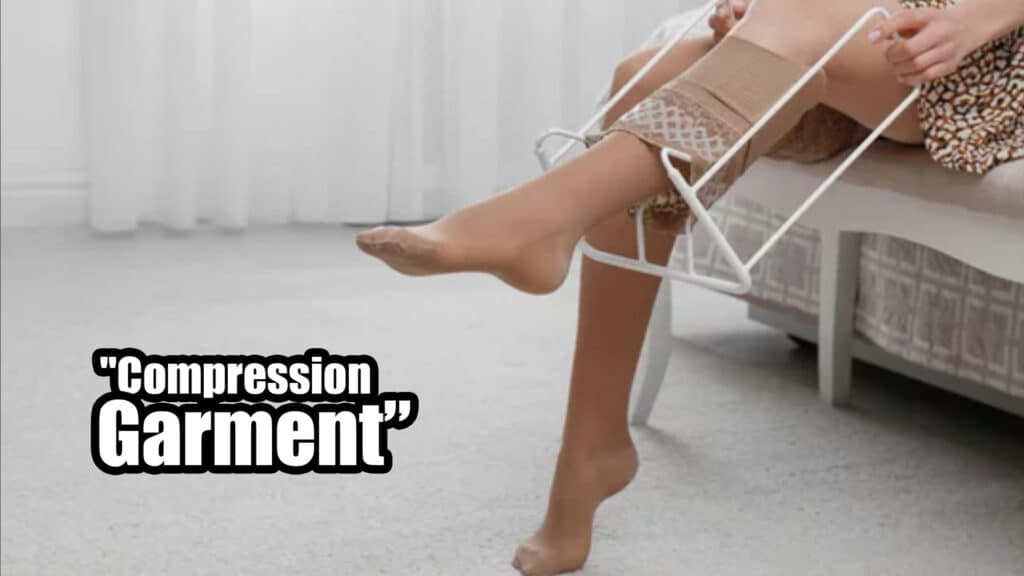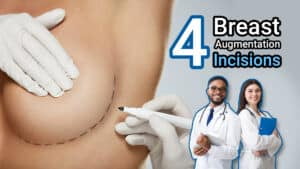
- February 3, 2023
- 2:53 pm
“Sculpt Your Thighs and Hips with Liposuction: The Secret to a Sleek Look!”
Table of Contents
Introduction
Thighs and Hips Liposuction is a procedure that involves removing excess fat deposits from specific areas of the body. With advancements in technology, liposuction has become a highly effective and safe procedure for body contouring. Many people are interested in knowing if liposuction can be used on the thighs and hips, and the answer is yes. Here we will discuss the benefits, risks, and recovery time associated with liposuction on the thighs and hips.

Liposuction on the Thighs and Hips
Liposuction on the thighs and hips involves removing excess fat from these areas to achieve a more toned and sculpted appearance. Thighs and hips are common problem areas for many people, and liposuction can be an effective solution for reducing the appearance of fat in these areas.

Benefits of Liposuction on the Thighs and Hips
- Improved body contour and shape
- Reduced appearance of cellulite
- Improved self-confidence and body image
- More toned and sculpted appearance
- Long-lasting results provided that a healthy lifestyle is maintained

Risks and Complications of Liposuction on the Thighs and Hips
Like any surgical procedure, liposuction on the thighs and hips is associated with certain risks and complications, including:
- Bleeding
- Infection
- Numbness or tingling
- Scarring
- Swelling and bruising
- Changes in skin sensation
It is essential to discuss the potential risks and complications with your doctor before undergoing liposuction on the thighs and hips.

Recovery Time after Liposuction on the Thighs and Hips
Recovery time after liposuction on the thighs and hips varies depending on the extent of the procedure and individual factors such as age, health status, and healing abilities. Most patients can go back to work and do everyday activities within a few days to a week after the procedure. However, strenuous exercise and physical activity should be avoided for several weeks to allow for proper healing.

Tips for a Smooth Recovery after Liposuction on the Thighs and Hips
- Follow your doctor’s instructions for post-operative care.
- Wear a compression faja to reduce swelling and promote healing.
- Take pain medication as prescribed by your doctor.
- Avoid strenuous exercise and physical activity for several weeks.
- Drink plenty of water and maintain a healthy diet.
- Keep the incision site clean and dry.
- Avoid exposing the incision site to direct sunlight.
- Follow up with your doctor as recommended.

Common Complications and How to Manage Them
- Bleeding: Minor bleeding is common after liposuction on the thighs and hips. Your doctor may prescribe pain medication to manage any discomfort associated with bleeding.
- Swelling and Bruising: Swelling and bruising are also common after liposuction on the thighs and hips. A compression garment can help reduce swelling and promote healing.
- Changes in Skin Sensation: Some patients may experience changes in skin sensation after liposuction on the thighs and hips. These changes are usually temporary and resolve on their own over time.

When to Seek Medical Attention
After the procedure, patients will need to rest and allow their bodies to recover. This may involve taking time off work and limiting physical activity for several days or weeks. In addition, follow the surgeon’s instructions for post-operative care, which may include:
- Wearing a compression garment: Patients will likely be required to wear a compression garment for several weeks after the procedure to help reduce swelling and promote healing.
- Taking pain medication: Patients may be prescribed pain medication to help manage any discomfort during the recovery period.
- Avoiding strenuous activity: Patients should avoid any strenuous activity, such as heavy lifting or intense exercise, for a few weeks after the procedure to allow the body to heal fully.
- Following a healthy diet: Eating a healthy and balanced diet can help to support the healing process and promote optimal results from the procedure.
- Regular follow-up appointments: Patients must attend regular appointments with their surgeons to monitor their progress and address any concerns.
It’s important for patients to understand that the recovery process can take several weeks and that results may not be fully visible for several months. However, with proper care and attention, patients can achieve the desired results from the procedure and enjoy a smoother, more toned appearance in their thighs and hips.
Conclusion
In conclusion, liposuction can be a highly effective solution for individuals looking to remove excess fat from their thighs or hips. The procedure can provide long-lasting results and help to create a smoother and more toned appearance in these areas. However, as with any cosmetic procedure, it’s essential to understand the potential risks and to take all necessary steps to ensure a safe and successful recovery.
For those considering liposuction for the thighs or hips, it’s important to consult with a qualified and experienced cosmetic surgeon to discuss your goals and expectations and to determine if the procedure is right for you. With the right care and attention, you can achieve the desired results from the procedure and enjoy a more confident and comfortable appearance in your own skin.
References:
- American Society of Plastic Surgeons. (2021). Liposuction.
- American Board of Cosmetic Surgery. (2021). Liposuction: What You Need to Know.
- Mayo Clinic. (2021). Liposuction.

FAQ
What is the cost of liposuction for the thighs or hips?
The cost of liposuction for the thighs or hips ranges from $2,000 to $4,000 or more, depending on the extent of the procedure and the experience of the surgeon. Other factors such as location, patient’s individual needs, and techniques used can also impact the cost. It’s important to discuss cost and financing options with your surgeon during the consultation and prioritize the expertise of the surgeon over cost.
How long does liposuction for the thighs or hips take to perform?
Liposuction for the thighs or hips usually takes 1-2 hours to perform, although the length of the procedure can vary depending on the extent of treatment and the individual needs of the patient. It’s a minimally invasive procedure that is typically performed under general anesthesia or local anesthesia with sedation. The length of the procedure can also be influenced by the specific techniques used by the surgeon.
Is liposuction for the thighs or hips considered major surgery?
No, liposuction for the thighs or hips is not considered major surgery. It is a minimally invasive procedure that is typically performed on an outpatient basis using local anesthesia with sedation or general anesthesia. The incisions made during the procedure are small, and the recovery time is usually brief, with patients able to return to normal activities within a few days to a week. Despite its minimally invasive nature, liposuction is still a serious medical procedure and should be approached with caution and careful consideration.
Can liposuction remove cellulite on the thighs or hips?
Liposuction can help improve the appearance of cellulite on the thighs or hips, but it is not a cure for cellulite. Cellulite is a condition that affects the texture of the skin and is caused by a combination of factors, including genetics, age, and weight fluctuations. Liposuction can remove excess fat and smooth out irregular contours, but it does not address the underlying causes of cellulite. Some patients may notice an improvement in the appearance of cellulite after liposuction, but results may vary and are not guaranteed. It’s important to discuss your concerns and expectations with your surgeon to determine if liposuction is the right choice for you.
Is liposuction for the thighs or hips effective for weight loss?
Liposuction for the thighs or hips is not a weight loss solution. The procedure is designed to remove small amounts of stubborn fat that cannot be lost through diet and exercise. Liposuction can help improve the shape and contour of the thighs or hips, but it is not a substitute for healthy lifestyle changes. Patients who are significantly overweight may not be good candidates for liposuction, and weight loss surgery may be a better option for achieving long-term weight loss results. It’s important to discuss your weight loss goals with your surgeon to determine the best course of action for your individual needs.
What is the average amount of fat that can be removed during liposuction on the thighs or hips?
The average amount of fat that can be removed during liposuction on the thighs or hips depends on a number of factors, including the size and shape of the area being treated, the individual’s body type, and the surgeon’s techniques. Generally, liposuction is designed to remove small amounts of fat and improve the contour of the treated area. The amount of fat removed during a single liposuction procedure is typically limited to 5-6 liters for safety reasons. Your surgeon will be able to provide a more accurate estimate of the amount of fat that can be removed during your liposuction procedure.
Can liposuction be combined with other procedures for the thighs or hips?
Yes, liposuction can be combined with other procedures for the thighs or hips. For example, some patients may choose to have liposuction along with a thigh or hip lift to tighten the skin and improve the overall appearance of the area. Other common procedures that may be combined with liposuction include fat transfer, which involves transferring fat from one area of the body to another, and cellulite reduction, which uses laser or radiofrequency energy to improve the appearance of cellulite. The decision to combine procedures will depend on the individual’s unique needs and goals and should be discussed with a surgeon to determine the best approach for their specific situation.
Is liposuction for the thighs or hips suitable for individuals of all ages and body types?
Liposuction for the thighs or hips is not suitable for everyone. The best candidates for the procedure are individuals who are close to their ideal body weight and have good skin elasticity. Good candidates should also have realistic expectations for the procedure and understand that liposuction is not a substitute for weight loss or a solution for cellulite. Individuals who have significant medical issues or who are significantly overweight may not be good candidates for liposuction. Age is also a consideration, as older individuals may have less skin elasticity and may not be good candidates for the procedure.










